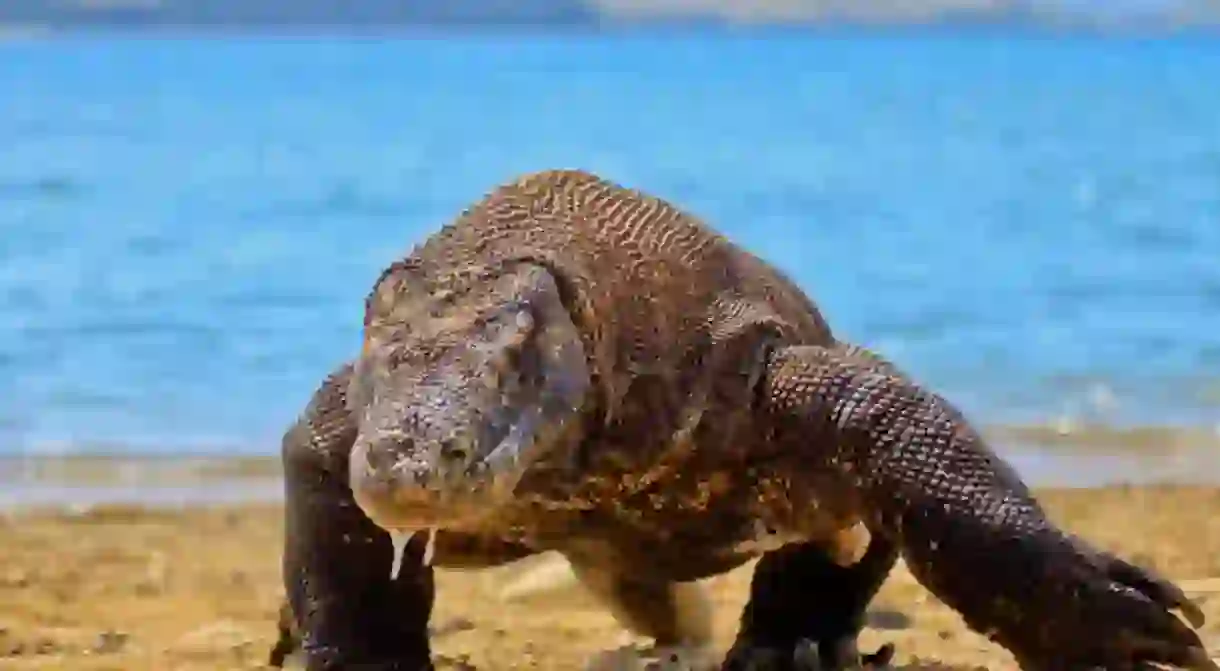Why the Komodo National Park in Indonesia Is One of the World's Finest Treasures

In terms of numbers and popularity among tourists, Komodo National Park may seem a little faint against the brightness of other touristy islands like Bali or Lombok. However, it’s a special place in so many ways, as it presents many things tourists can’t find anywhere else. Read on to be convinced that the Komodo National Park in Indonesia is one of the world’s finest treasures.
Komodo National Park comprises three islands—Komodo Island, Padar Island, and Rinca Island—and numerous surrounding smaller islands. It’s situated between the provinces of East Nusa Tenggara and West Nusa Tenggara, east of the more popular Bali and Lombok.

The Komodo National Park is a World Heritage Site
Komodo National Park is dedicated to providing a natural habitat for, and conservation of, the ancient and rare Komodo Dragon (Varanus komodoensis). The park’s importance is acknowledged by global organizations such as UNESCO, who classified it as a UNESCO World Heritage Site in 1991. Not only that, WWF and Conservation International have recognized the place as a global conservation priority area. And last but not least is the park’s status as one of the New7Wonders of Nature, which has established its global significance.
Spot the rare Komodo Dragon
Komodo Dragons can only be found on five islands in the whole world, four of which are part of the national park, plus the nearby Flores Island in East Nusa Tenggara. According to scientists, this particular species has managed to survive for millions of years, making it one of the oldest species that still exists today. Many scientists believe that the otherworldly Dragons are close relatives to the dinosaur, from the same era and showing similar bodily structure. For that reason, Komodo Dragons are often called “the last dinosaur in the world.” The species is also known as the largest living species of lizard, with an average length of 2-3 meters.
Those feats have led interested scientists and curious tourists to the park. Even so, the area is far less touristy than neighboring Bali or Lombok, enabling a state of purity and natural preservation.

The mighty Komodo Dragon | © Jon Chia/Flickr
The abundant biodiversity
Majestic as they are, Komodo Dragons are not the only inhabitant of the national park. Its distinctive natural environment combines a strong current, nutrient-rich ocean water and volcanic elements, which have made it possible for thousands of different species to thrive in and around the islands. As many as 1,000 species of tropical fish, 260 species of coral, 70 species of sponge, as well as remarkable endemic species like the orange-footed scrub fowl, the Timor deer, Rinca rat, turtles, dolphins, and dugongs live within the area.
A remarkable underwater adventure
Extending beyond land, the underwater species in the area is also impressive. In fact, the park has more that 50 world-class dive sites to explore, offering something for beginners to expert divers alike. Divers can almost be guaranteed an encounter with rare exotic species, from neon tropical fish to sea turtles, sponges to sea cucumbers. Many of the exquisite species of coral and fish can also be observed just by lazily floating about on the water with a snorkel.

The exceptional beauty
Volcanic islands with lush vegetation and magnificent hills sure make a wonderful sight. In the islands of Komodo National Park, tourists can enjoy white sand beaches, brilliant blue waters, lush green forests, dry savannah… all in one picture.














